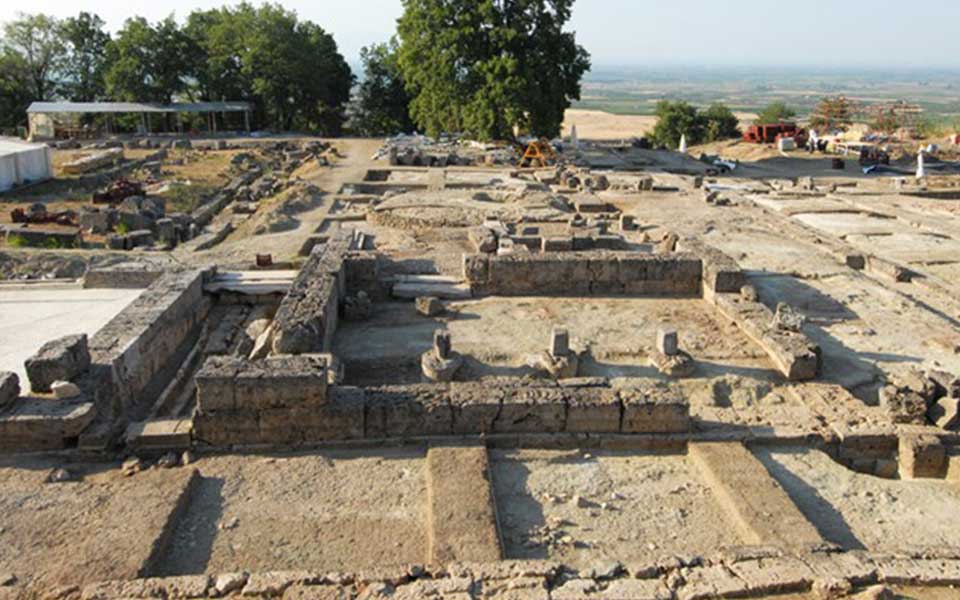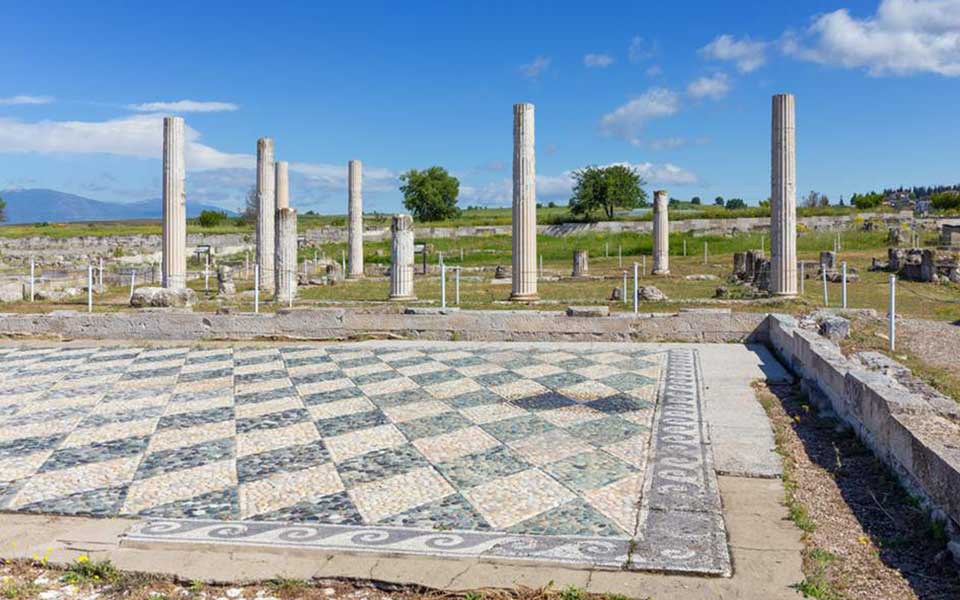An important set of plans for the Palace of Ancient Pella, where Alexander the Great was born and grew up have been green lit by the Central Archaeological Council (KAS),
The plans concern the conservation, partial restoration and highlighting of the Monumental Propylae and Building I, both important parts of the huge complex that comprises the palace, which covers about 5.6 hectares.
In 2016, the preliminary study for the restoration of the Palace of Ancient Pella was approved.
The palace, the capital of ancient Macedonia,was at the heart of the Macedonian kingdom. The independent buildings of which it is comprised were linked via stoas, corridors and staircases.
The Propylae formed the main entrance, framed by two Dorian columns to the east and west which corresponded to two buildings, Building I (to the east) and Building II. These two building were the most important of the complex.
Today essentially only the foundations of the palace have been preserved, as the rest of the buildings disappeared in Byzantine and later years through wholesale plundering of the stones with which it was built.

Key characteristics of the complex are its huge size, as well as a structure that resembled that of a theater, given that it featured successive levels. That image is not visible today; however the implementation of the restoration plans of the Ephorate of Antiquities of Pella (which will be funded in part through European structural funds) promises to change that.
The scattered ancient material was catalogued in order to be utilized in the restoration, while among the goals of the study is to clarify the layout, to highlight the successive levels of the complex, the theatrical and monumental nature of the palace, and to discreetly give a sense of how it once stood in 3 dimensions. The last will be achieved with the restoration of four columns of the peristyle of the courtyard of Building I and another three in the stoa of the propylae.
The first iteration of the palace was constructed during the reign of King Archelaus at the end of the 5th century BC. Archelaus tasked the famed painter Zeuxis of Heraclea with its decoration, while during the same period in Archelaus’ court Euripides wrote the tragedies “Archelaus” and “The Bacchae”.
With information from ANA-MPA and pella-museum.gr











